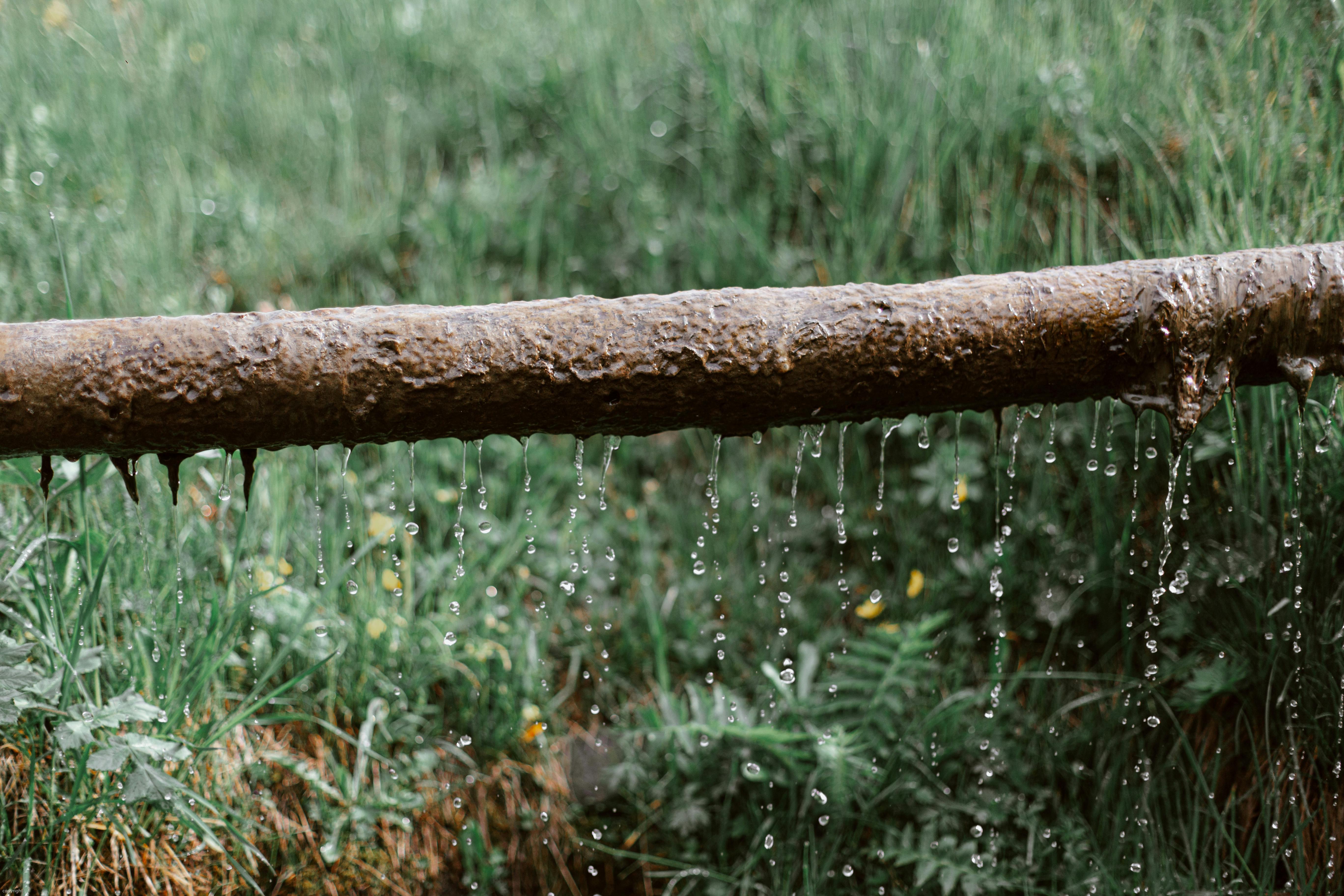Is it too late to drain my water heater? This is a question that many homeowners have when they realize they haven’t been properly maintaining their water heater. Draining the water heater is an important part of its regular maintenance, as it helps to remove sediment buildup and can help to extend the life of the unit. Therefore, if you’ve neglected your water heater for a while, it’s important to find out if it’s too late to drain it before any further damage can occur. In this article, we’ll discuss the consequences of not draining your water heater and provide some tips on how you can do it correctly.No, it is not too late to drain your water heater. You can drain your water heater anytime you feel it needs to be done.
Benefits of Draining a Water Heater
Draining a water heater can provide numerous benefits, including improved energy efficiency, increased safety, and better performance. As water heaters age, sediment can accumulate and corrode the inside of the tank. This sediment can reduce the capacity of the water heater tank and reduce its efficiency. By draining your water heater regularly, you can help ensure that it continues to operate at peak efficiency.
Draining a water heater also helps keep it safe. Sediment can act as an insulator which prevents heat from escaping quickly from the tank, leading to overheating. This in turn can cause the pressure relief valve to open more frequently or even fail altogether, potentially leading to a hazardous situation. Additionally, if sediment is allowed to accumulate in the tank, it may eventually clog up the drain valve itself, which could prevent proper draining when needed.
Finally, by flushing out your water heater on a regular basis you will also help ensure that your hot water supply remains clean and free from contaminants that may have built up over time. This will not only improve your hot water supply but will also help extend the life of your appliance by preventing corrosion and scaling from building up on its interior surfaces.
In conclusion, draining your water heater on a regular basis is an important part of keeping it running efficiently and safely for many years to come. Be sure to check with your manufacturer’s instructions for specific maintenance requirements for your appliance model.
Why Draining a Water Heater Is Necessary
Draining your water heater is an important part of maintaining it and keeping it running efficiently. This process helps to remove sediment and scale buildup that can cause the unit to work harder and use more energy. Regular draining helps to extend the life of your water heater and keeps it running at peak efficiency. It also helps to prevent corrosion of the inner tank from occurring, which can lead to expensive repairs or replacement. Additionally, draining your water heater can also help increase the hot water supply in your home or business. Here are some reasons why draining a water heater is necessary:
1. Removing Sediment: One of the most important reasons for draining a water heater is that it allows you to remove any sediment that has built up over time. This sediment can clog up the pipes, reduce efficiency, and increase energy costs. By regularly flushing out the tank, you can help prevent these problems from occurring.
2. Reducing Corrosion: Another reason for draining your water heater is that it helps to reduce corrosion within the tank. The buildup of minerals in hard water can cause corrosion to occur within the tank, which can lead to expensive repairs or even replacement over time.
3. Improving Efficiency: Draining your water heater will also help improve its efficiency by removing any build-up of sediment or scale that may be preventing it from working properly. This will result in lower energy costs as well as improved performance.
4. Increasing Hot Water Supply: If you have a large family or business with lots of people using hot water, then regularly draining your water heater will help increase its output capacity and provide more hot water when needed.
Overall, regular draining of your water heater is an essential part of keeping it running properly and improving its efficiency and performance over time. Regular maintenance will help extend its life span and keep energy costs down while providing plenty of hot water when needed.
Risks Associated With Not Draining a Water Heater
Failing to drain a water heater on a regular basis can have serious consequences. Over time, sediment can build up in the bottom of the tank, reducing its efficiency and leading to higher energy bills. In extreme cases, the buildup of sediment can cause an obstruction in the pipes leading to the tank, eventually leading to it bursting and causing extensive damage to your home. Furthermore, if the water heater is not regularly drained and maintained, it can become a health hazard as bacteria can start to form in the tank.
In addition, if you don’t drain your water heater regularly enough it could lead to corrosion inside the tank which will eventually cause it to leak. This could result in significant damage and costly repairs. Furthermore, without regular draining of your water heater, you run the risk of your warranty being voided as part of your maintenance schedule should something go wrong.
Finally, failing to drain a water heater on a regular basis means that you are not taking advantage of any energy savings that this simple procedure can offer. Draining your hot water heater regularly will help ensure that it runs at its peak performance level and keeps energy costs down over time.
How to Drain a Water Heater
Draining a water heater is a simple process that can be done without the help of a professional plumber. Knowing how to drain a water heater can help you maintain your water heater and ensure it remains in good working condition for years. Here are the steps for draining a water heater:
1. Turn off the power to the water heater: Make sure to turn off both the gas and electricity before beginning any work on your water heater. This will prevent any shocks or fires while you are working on it.
2. Locate the drain valve: The drain valve is usually located at the bottom of the water heater. It should be clearly marked with an arrow pointing down towards it.
3. Connect garden hose to drain valve: Once you have located the drain valve, attach a garden hose to it by unscrewing the nut on top of the valve and then wrapping one end of the hose around it and tightening again with the nut. Make sure that both ends of the hose are securely attached so no leaks occur during draining process.
4. Place other end of hose in nearby drain or outside: Place one end of the hose into a nearby sink, bathtub or outside so that you can catch all of the draining water from your water heater.
5. Open drain valve: Once everything is in place, open up your drain valve by turning it clockwise until it stops turning and then let all of the built-up sediment and sludge from inside your tank flow out into your garden hose or sink/tub.
6. Flush out tank with cold water: After draining out all of sediment from inside your tank, flush out any remaining sediment by running cold tap water through it for several minutes until there is no more debris coming out from inside your tank.
7. Close drain valve, turn power back on and refill tank: Once you are done flushing out your tank, close up your drain valve by turning it counterclockwise until tight, turn back on power to both gas and electricity and refill tank with cold tap water before using again .

Gather Necessary Supplies
Before draining a water heater, it is important to gather all of the necessary supplies. This includes a garden hose, bucket, and adjustable wrench. It is also helpful to have a rag and a pair of gloves on hand to protect against any splashing water. Additionally, it is important to make sure that there are no combustible materials in the area where the water heater is located.
Turn Off Power Source
The next step before draining a water heater is to turn off the power source. This can be done by either turning off the breaker at the main electrical panel or by shutting off the gas valve at the wall. If there is any electricity or gas remaining in the system, it can be extremely dangerous and cause injury or death.
Drain Water Heater
Once all of the necessary supplies are gathered and the power source has been shut off, it is time to drain the water heater. The first step is to attach a garden hose to the drain valve at the bottom of the tank. Then open up both hot and cold water valves located near the top of the tank before opening up the drain valve. Allow all of water to fully drain out before closing all valves again.
Flush Tank
After draining out all of water from inside of tank, it is important to flush out any debris or sediment that may have built up over time. This can be done by refilling tank with clean cold water from garden hose and then allowing it to fully empty back out into bucket or down drain again. Repeat this process until there are no more visible particles in water being emptied out from inside tank.
Refill Tank
Once tank has been completely drained and flushed out, it is time to refill it with fresh cold water. Make sure that both hot and cold valves are in an open position before turning on power source again. As soon as electricity or gas has been re-applied, allow tank to fill up with fresh cold water until it reaches its normal operating level before turning off both valves again.
Finally, once all of these steps have been taken, your water heater should be safely drained and ready for use once again!
No Hot Water
One of the most obvious signs that your water heater needs to be drained is if you are no longer getting hot water out of the tap. If your hot water tank is full of sediment, it can restrict the flow of heated water and cause it to take longer to get hot. If you have noticed that your hot water tank is taking much longer than usual to heat up, then it is likely time for a draining.
Strange Noises
If you are hearing strange noises coming from your water heater, such as banging, popping or hissing, then this could indicate that sediment has built up in the tank and needs to be drained. When sediment builds up, it can cause a reaction when heated which produces these strange noises. A draining will help to remove this sediment and restore normal operation.
Leaking Tank
If you notice that your water heater is leaking from around the base or any other area, then this could be an indication that it needs to be drained. When sediment builds up in the bottom of a tank, it can cause corrosion which can lead to leaks. Draining will remove this sediment and help to prevent further damage.
Odors
If you notice any strange odors coming from your water heater or out of the tap when running hot water, then this could mean that there is a build-up of bacteria in the tank which needs to be addressed. Draining your tank will help remove any excess bacteria or debris which may be causing these odors.
Clogged Drain Valves
One of the most common problems that can occur when draining a water heater is clogged drain valves. This can happen when there is an accumulation of sediment, dirt, or other debris in the water heater. This sediment can build up in the drain valve and prevent it from functioning properly. If this happens, it can be difficult to drain the water heater properly and can cause leaking or other problems. It is important to regularly check the drain valves for any signs of blockage or buildup and to take steps to clean them if necessary.
Corroded Pipes
Another problem that can occur when draining a water heater is corroded pipes. Over time, pipes can become corroded due to exposure to corrosive materials such as chlorine or hydrogen sulfide. This corrosion can cause leaks and other issues with the plumbing system, making it difficult to effectively drain the water heater. If you notice any signs of corrosion on your pipes, it is important to call a professional plumber as soon as possible in order to avoid further damage.
Leaking Connections
Leaking connections are another common problem that can occur when draining a water heater. This occurs when there are loose connections between pipes or fittings, allowing water to escape from the plumbing system. This leaking water can cause damage to floors and walls, as well as create an unpleasant odor in your home. It is important to regularly check all connections for any signs of leaking and have them repaired by a professional plumber if necessary.
Faulty Pressure Relief Valves
Faulty pressure relief valves are another potential issue that could arise when draining a water heater. Pressure relief valves are designed to open and release pressure if it gets too high inside the tank, preventing serious damage from occurring due to excessive pressure buildup inside the tank. If these valves fail or become faulty, they may not open at all if needed or could open prematurely and release too much pressure into your home’s plumbing system. It is important to have these valves checked regularly by a professional plumber in order to ensure they are functioning properly at all times.

Conclusion
Draining a water heater is a simple and cost-effective way to extend its lifespan. It can help improve its efficiency, reduce sediment buildup, and remove any accumulated rust or corrosion. Draining the water heater regularly also helps maintain its safety features like the pressure-relief valve. If you have not drained your water heater in several years, it is not too late to do so. In fact, it is highly recommended that you do so at least once a year in order to ensure that your water heater is running efficiently and safely.
If you are unsure of how to drain your water heater or if you need assistance with maintenance or repairs, contact a professional plumber who can help ensure that the job is done safely and correctly. Taking these steps will help keep your water heater running efficiently and safely while extending its lifespan for many years to come.

